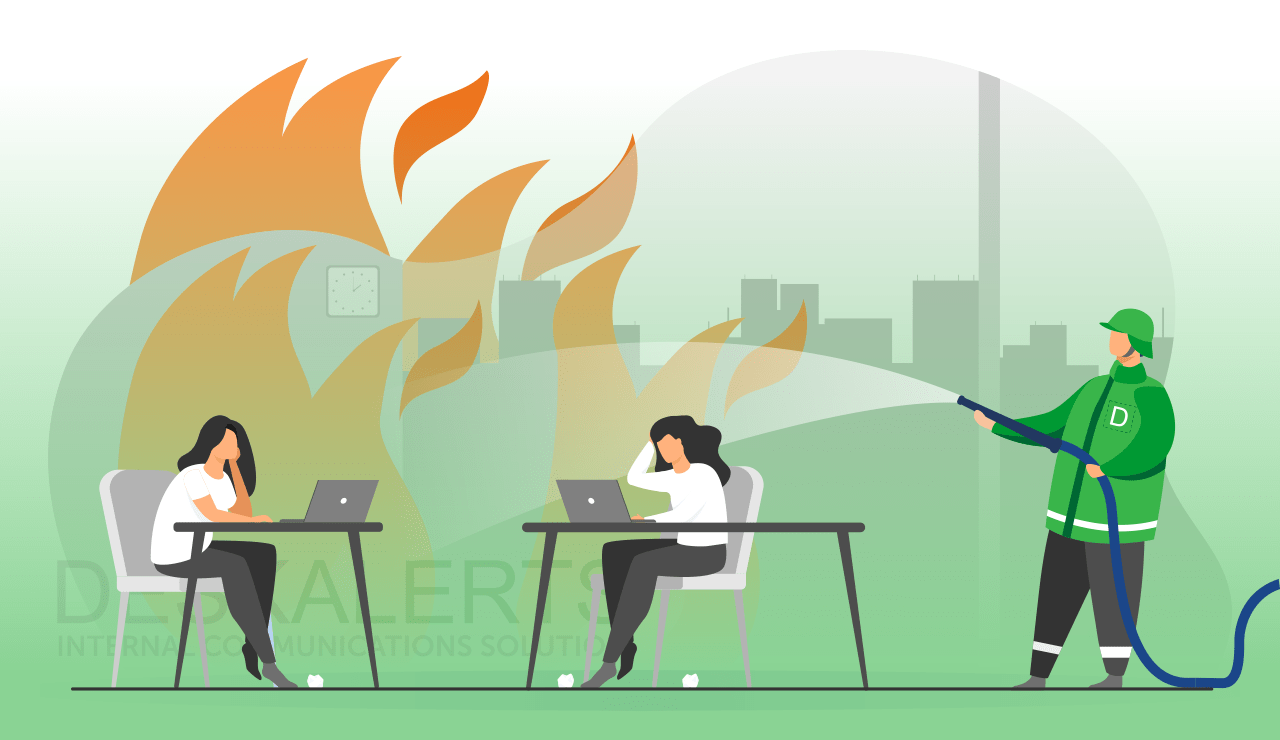
Employee welfare is an important investment for your company. Your company’s greatest assets are its people. When you look after your people, you’re helping to invest in the success of your company and to safeguard its future.
What is employee welfare?
Employee welfare is an all-encompassing term that describes the physical and mental health and wellbeing of your employees. This can include their physical work environment as well as other factors in and outside the workplace that affect their quality of life, health, mental wellbeing and, in turn, their performance at work.
Employee welfare initiatives are designed to look at reducing absences from work as a result of illness or injury as well as encouraging and promoting healthier attitudes and lifestyles which will have a positive affect on every aspect of the employee’s life.
What are the Main Characteristics of Employee Welfare?
Employee welfare encompasses a range of programs and initiatives designed to enhance the overall well-being of employees. The main characteristics include:
- Supportive Environment: At its core, employee welfare focuses on creating a workplace that fosters a supportive environment. This involves ensuring both physical safety through stringent health and safety standards and mental well-being by addressing stress and workload concerns. For example, a supportive environment might include ergonomic office furniture to prevent physical strain and mental health resources like counseling services to help employees manage stress and work-life balance.
- Comprehensive Benefits: Employee welfare programs often provide a range of benefits beyond basic compensation. These benefits include health insurance that covers medical expenses, dental and vision care, and comprehensive wellness programs like fitness memberships and health screenings. By offering these benefits, companies aim to address various aspects of employees' health and financial security, contributing to their overall well-being.
- Employee Engagement: Effective welfare systems foster employee engagement by making individuals feel valued and supported. Engaged employees are more likely to contribute positively to the workplace, showing increased motivation and commitment. Engagement can be achieved through recognition programs, opportunities for career advancement, and regular feedback mechanisms that allow employees to voice their opinions and feel heard.
- Continuous Improvement: Employee welfare is not a static area; it requires regular evaluation and adaptation to meet the evolving needs of employees and the organization. Continuous improvement involves gathering feedback, analyzing program effectiveness, and staying updated with industry trends and best practices. This ensures that welfare programs remain relevant and effective in supporting employees' needs.
What are the Types of Employee Welfare?
Employee welfare can be divided into two main categories: statutory and voluntary.
Statutory
Statutory employee welfare refers to benefits and protections that are legally mandated. These include:
-
Health and Safety Regulations: Employers are required to comply with regulations designed to ensure a safe working environment. This includes conducting regular risk assessments, providing necessary safety equipment, and adhering to safety training requirements. Ensuring compliance helps prevent workplace accidents and health issues, safeguarding employees' physical well-being.
-
Minimum Wage and Overtime Pay: Legal requirements ensure that employees are paid fairly for their work. This includes adherence to minimum wage laws, which guarantee that employees receive a baseline level of compensation, and overtime pay regulations, which ensure that employees are compensated for extra hours worked beyond their regular schedule. These measures help protect workers from exploitation and ensure fair compensation.
-
Leave Entitlements: Statutory leave entitlements include sick leave, maternity/paternity leave, and annual leave, which are legally required to support employees during critical periods. These entitlements provide employees with the time needed to recover from illness, attend to family matters, or take a break, contributing to their overall well-being and work-life balance.
Voluntary
Voluntary employee welfare encompasses additional benefits offered by employers that go beyond legal requirements. Examples include:
-
Health and Wellness Programs: These programs might include gym memberships, on-site fitness facilities, wellness workshops, and mental health support services. By offering such programs, employers can help employees maintain their physical and mental health, potentially reducing absenteeism and improving overall job satisfaction.
-
Professional Development: Opportunities for training and career advancement, such as workshops, seminars, and educational courses, are part of voluntary welfare. These programs help employees enhance their skills, advance their careers, and stay engaged with their work. Investing in professional development can also lead to higher employee retention and a more skilled workforce.
-
Flexible Working Arrangements: Options like remote work, flexible hours, and compressed workweeks allow employees to better balance their personal and professional lives. This flexibility can lead to increased job satisfaction and productivity, as employees are able to manage their work schedules in a way that best suits their needs.
What are the Benefits of Employee Welfare?
Implementing effective employee welfare programs provides several significant benefits:
-
Enhanced Employee Satisfaction: Comprehensive welfare programs contribute to higher levels of job satisfaction by addressing employees' physical, mental, and emotional needs. When employees feel supported and valued, they are more likely to have a positive outlook on their jobs and the organization.
-
Increased Retention Rates: Employees are more likely to stay with a company that demonstrates a genuine commitment to their well-being. Robust welfare programs can reduce turnover rates, saving the organization the costs associated with recruiting and training new employees.
-
Higher Productivity: A well-supported and satisfied workforce tends to be more productive. Employees who feel their needs are met are more likely to be motivated and engaged in their work, leading to better performance and outcomes for the organization.
Attraction of Top Talent: In a competitive job market, strong employee welfare programs can make a company more attractive to potential hires. Offering comprehensive benefits and a supportive work environment can help attract high-quality candidates and give the organization an edge over competitors.
Why employee welfare needs improvement
For employers, the cost of absenteeism is very high. And a lot of absenteeism is related to stress in the workplace. According to the UK 2020 Workplace Stress Survey, 79% of workers report that they are stressed at work.
The major causes of workplace stress include:
- Workplace politics
- Bullying and harassment
- Poor communication
- Working long hours
- Lack of direction
- Poor relationships with manager
- Unsafe working conditions
The COVID-19 pandemic has affected employees’ welfare in many organizations. Staff have more stressors than ever before from a range of factors, including working remotely and feeling disconnected, feeling like they are spending all their lives at work, being worried about their health, recovering from the virus if they unfortunately catch it, worrying about vaccines as well as concerns around other health and hygiene protocols.
Reducing the burden of stress and any other workplace health and wellbeing issues has a direct benefit to reducing absenteeism as well as increasing productivity, lowering staff turnover and attracting and retaining talent.
By neglecting employee welfare, not only will these issues go unaddressed, but you as an employer will become partly responsible for any welfare issues faced by your employees. This means that you will not only have to deal with the costs of having gaps to fill in terms of your team when people take time off for health and wellbeing issues, but the company may also have additional costs in terms of workers compensation claims.
Further financial impacts can come in terms of loss of productivity as stressed employees are disengaged, tired, burned out, worried and anxious and not able to work at their peak.
Workplace safety is also critical for employee welfare. If you don’t focus on employee safety and provide your workers with a safe physical workplace you could also have similar issues on your hands in terms of law suits, lost productivity, down time and high staff turnover. Additionally, depending on the scope of any workplace injuries, you could end up with a public relations issue that would cause customers and clients to reconsider doing business with your company on philosophical grounds.
What Should Be Included in Employee Welfare Programs?
Effective employee welfare programs should include:
- Health and Wellness Initiatives: Comprehensive health insurance plans, including medical, dental, and vision coverage, are essential. Wellness initiatives might include fitness programs, mental health resources, and regular health screenings to promote overall well-being.
- Work-Life Balance Support: Programs that support work-life balance could include flexible working arrangements, such as remote work options and flexible hours, as well as generous leave policies, including paid time off and parental leave. These measures help employees manage their personal and professional responsibilities more effectively.
- Financial Benefits: Financial benefits such as retirement plans, financial planning services, and performance bonuses contribute to employees' financial security. Offering competitive compensation and additional financial perks can enhance overall job satisfaction and loyalty.
-
Professional Development: Providing opportunities for training, skill development, and career advancement helps employees grow professionally. This might include access to workshops, seminars, certification programs, and educational assistance.
Employee Assistance Programs: These programs offer support for personal issues, including counseling services, legal advice, and financial planning assistance. Employee assistance programs help employees navigate challenges and maintain their well-being both inside and outside the workplace.
6 ways to improve employee welfare
By taking these proactive steps you can improve employee welfare within your business.
1. Conduct regular surveys
You can’t fix what you don’t know about. By conducting regular pulse surveys of employees you can determine if there are any new or emerging or ongoing issues that need to be managed in terms of how stressed they are feeling.
2. Conduct regular risk assessments
You should have regular risk assessments carried out to determine how your buildings, properties and equipment stand up in terms of safety so that any issues can be addressed before they cause any harm to someone.
3. Ensure you comply with any government guidelines
There are different rules in different jurisdictions about what companies are mandated to provide in terms of health and wellbeing, safety and welfare standards within their organizations. You should review your current practices to ensure that you are delivering on what you are expected to deliver.
4. Train your employees
Health and safety training for management and employees is essential to ensure that everyone is on the same page and understands about safe work practices and compliance requirements.
5. Offer flexibility
People are often stressed because of the pace of modern life and trying to fit in their family commitments around their job. By offering employees the ability to work in more flexible ways, such as remotely or working non-standard work hours you can help alleviate this stress by giving them more control over their time.
6. Offer health and wellbeing programs
There are different types of health and wellbeing programs often offered by corporations to their employees. This can include discounted gym memberships, health insurance, access to an employee assistance program, access to counselling and access to libraries of resources on managing health and wellbeing issues.
How to Build an Employee Welfare System?
Building an effective employee welfare system involves several key steps:
- Assess Needs and Preferences: Begin by gathering data on employee needs and preferences through surveys, focus groups, and individual consultations. Understanding what employees value most will help tailor welfare programs to address their specific needs and priorities.
- Set Clear Objectives: Define the goals of the employee welfare system, such as improving health outcomes, enhancing job satisfaction, or increasing employee retention. Clear objectives provide direction and help measure the success of the welfare programs.
- Design Comprehensive Programs: Develop a range of programs that address both statutory and voluntary aspects of employee welfare. Ensure that the programs are well-rounded, covering health and wellness, financial security, work-life balance, and professional development.
- Implement and Communicate: Roll out the welfare programs effectively and communicate clearly with employees about the benefits available to them. Use various channels such as internal newsletters, meetings, and the company intranet to ensure that employees are informed and understand how to access the programs.
Monitor and Evaluate: Regularly assess the effectiveness of the welfare programs through employee feedback, usage statistics, and performance metrics. Continuously improve the programs based on this evaluation to ensure they remain relevant and effective in meeting employees' needs.
How to promote your employee welfare initiatives
Employee welfare initiatives are often poorly communicated which can affect how much they are used by employees. It can also make employees assume that management doesn’t care about their welfare because they don’t realise there are actually initiatives in place that address their needs.
A common mistake made is that new initiatives are only ever communicated once and management assumes that is enough to let everyone know that they are there. The trouble with this is that the information may be quickly forgotten or missed entirely by employees when the information is initially sent. And when new employees join the organization, they won’t know about these initiatives unless they happen to go digging around the intranet and find them by chance.
A multichannel approach to communicating welfare programs within your company and using repetition strategies will help to reach employees all year round and keep your welfare initiatives front of mind.
The more you communicate something, the more likely it is for the message to be retained. By using different communication channels to repeat your messages, incorporating different elements that suit peoples’ communications preferences, it is more likely they will recall the information.
When it comes to welfare initiatives, consider sending content in the following ways:
- Send information in pop-up alerts
- Use scrolling desk-top tickers to send people to detailed content on the intranet
- Have welfare issues and initiatives included as a standing item on team meeting agendas
- Include a regular welfare tip in the company newsletter
- Start conversations about health and welfare issues on your corporate social media
- Use custom screensavers, corporate wallpapers and digital signage displays to remind people about welfare initiatives
- Create posters for staff break rooms and other common areas
- Send surveys, polls and quizzes about welfare issues, which will also help you gather data.
***
Employee welfare is a very important issue for all organizations, and can sometimes be difficult to navigate. Putting strategies in place informed by data will help you to prioritize your welfare initiatives and improve outcomes in your organization.
FAQs
What is employees’ welfare?
The definition of employees’ welfare is efforts that are made to make life worth living for employees. It’s a term that includes the benefits, services and facilities that are offered by employers to their employees for the purpose of providing comfort an improving their lives. It can include monitoring and improving work conditions, providing health and safety resources and infrastructure, accident prevention, and various other measures to ensure that employees are healthy and safe.
How do you improve employee wellbeing?
There are different ways to improve employee wellbeing. This can include:
- Providing access to an Employee Assistance Program
- Introducing friendly fitness challenges between staff
- Providing well-being based employee benefits such as gym memberships, access to apps, discounted healthcare.
- Appoint health and wellbeing leaders
- Ensuring your workplace is safe
- Holding wellbeing workshops
- Providing your employees with access to healthy food
- Offering genuine flexibility options.
How do you manage staff welfare?
To manage staff welfare you need to understand the different factors that may be at play affecting health and wellbeing both inside of the workplace. When you understand the different mental and physical issues that could be impacting your team, you can then begin developing initiatives that target the specific issues that you are faced with. Commit your company to improving the general welfare of employees by showing them you care about them and that you are willing to work to make things better for them.
Why is staff welfare so important?
Staff welfare is important for not only the employees themselves but for the entire organization. Promoting staff welfare initiatives is good for the prevention of stress and for the creation of a positive work environment where people and organizational performance can thrive.
 Caroline Duncan
Caroline Duncan







